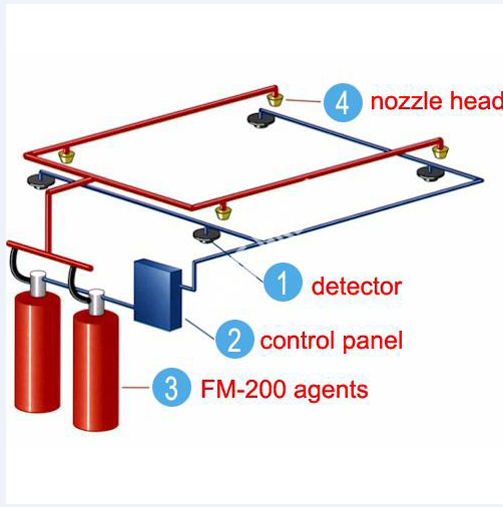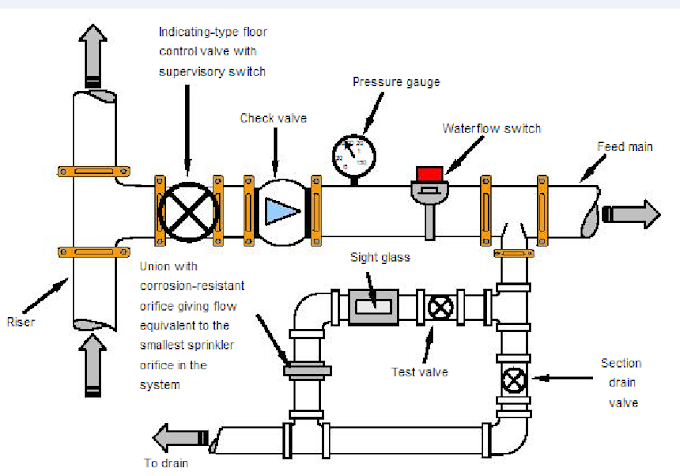Absorption Water Chillers
Contents
- Introduction
- Absorption Refrigeration Cycle
- Absorption Chiller Types
- Capacity Control
- Maintenance Considerations
- Application Considerations
- Review
Introduction
Systems that employ water chillers are commonly called chilled-water
systems.
Although water chillers come in many sizes and types, they all produce cooling
using the same basic principles of heat transfer and change-of-phase of the
refrigerant. This is accomplished by the chiller refrigeration cycle. They differ
from each other based on the refrigeration cycle and the type of refrigerant fluid
used.
Water chillers using the vapor-compression refrigeration cycle vary by the type
of compressor used. The compressor works to draw in refrigerant vapor and
increase its pressure and temperature to create the cooling effect.
Reciprocating, scroll, helical-rotary (or screw), or centrifugal compressors are
generally used in water chillers that employ the vapor-compression
refrigeration cycle.
Absorption water chillers make use of the absorption refrigeration cycle and do
not use a mechanical compressor. The absorption refrigeration cycle is used in
both small and large air-conditioning equipment. This clinic, however, focuses
on large water-chiller applications of the absorption cycle. The different types of
absorption water chillers will be discussed in detail in Period Two.
Absorption Refrigeration Cycle
This period describes the components of the absorption refrigeration cycle.
Comparing the absorption refrigeration cycle with the more familiar vapor compression refrigeration cycle is often an easy way to introduce it. Like the
vapor-compression refrigeration cycle, the absorption refrigeration cycle uses
the principles of heat transfer and change-of-phase of the refrigerant to produce
the refrigeration effect.
Both the vapor-compression and absorption refrigeration cycles accomplish
cooling by absorbing heat from one fluid (chilled water) and transferring it to
another fluid (cooling water or ambient air). Both cycles circulate refrigerant
inside the chiller to transfer this heat from one fluid to the other. Both cycles
also include a device to increase the pressure of the refrigerant and an
expansion device to maintain the internal pressure difference, which is critical
to the overall heat transfer process.
In the vapor-compression refrigeration cycle, refrigerant enters the evaporator
in the form of a cool, low-pressure mixture of liquid and vapor (A). Heat is
transferred from the relatively warm air or water to the refrigerant, causing the
liquid refrigerant to boil. The resulting vapor (B) is then pumped from the
evaporator by the compressor, which increases the pressure and temperature
of the refrigerant vapor.
The hot, high-pressure refrigerant vapor (C) leaving the compressor enters the
condenser where heat is transferred to ambient air or water at a lower
temperature. Inside the condenser, the refrigerant vapor condenses into a
liquid. This liquid refrigerant (D) then flows to the expansion device, which
creates a pressure drop that reduces the pressure of the refrigerant to that of
the evaporator. At this low pressure, a small portion of the refrigerant boils (or
flashes), cooling the remaining liquid refrigerant to the desired evaporator
temperature. The cool mixture of liquid and vapor refrigerant (A) travels to the
evaporator to repeat the cycle.
The vapor-compression refrigeration cycle is discussed in detail in the
Refrigeration Cycle clinic.
There are two fundamental differences between the absorption refrigeration
cycle and the vapor-compression refrigeration cycle. The first is that the
compressor is replaced by an absorber, pump, and generator. The second is
that, in addition to the refrigerant, the absorption refrigeration cycle uses a
secondary fluid, called the absorbent. The condenser, expansion device, and
evaporator sections, however, are the same.
Download Also HVAC Design Calculations Formulas Handbook
Refrigerant enters the evaporator in the form of a cool, low-pressure mixture of
liquid and vapor (A). Heat is transferred from the relatively warm water to the
refrigerant, causing the liquid refrigerant to boil. Using an analogy of the vaporcompression cycle, the absorber acts like the suction side of the compressor—it
draws in the refrigerant vapor (B) to mix with the absorbent. The pump acts like
the compression process itself—it pushes the mixture of refrigerant and
absorbent up to the high-pressure side of the system. The generator acts like
the discharge of the compressor-it delivers the refrigerant vapor (C) to the rest
of the system.
The refrigerant vapor (C) leaving the generator enters the condenser, where
heat is transferred to water at a lower temperature, causing the refrigerant
vapor to condense into a liquid. This liquid refrigerant (D) then flows to the
expansion device, which creates a pressure drop that reduces the pressure of
the refrigerant to that of the evaporator. The resulting mixture of liquid and
vapor refrigerant (A) travels to the evaporator to repeat the cycle.
The components of the absorption refrigeration cycle will be discussed in detail
in a moment. ( Chilled Water Piping Design )










0 Comments